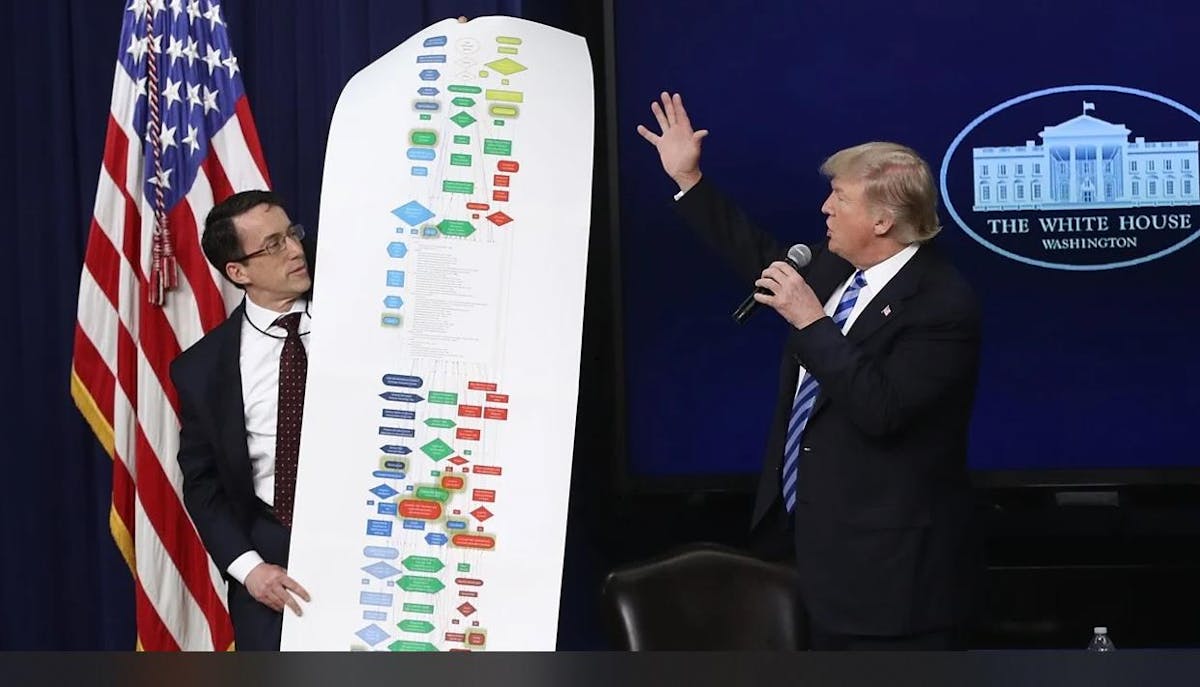
Trade war could end if China commits to helping Trump make America’s infrastructure great again
William Mundell says the US should delegate its complaints about China’s flaunting of WTO rules to a multilateral organisation while China could direct some of its Belt and Road Initiative funding towards US infrastructure.
Lee Kuan Yew, the founding prime minister of Singapore, often said that competition between the US and China is inevitable, but conflict is not. He may have been underestimating the suspicions and fears underlying great power relations today.
Even if we get past the present stand-off, the prospects for an enduring resolution to the trade war are remote unless a fundamentally different approach is employed.
In Trumpian logic, because the United States runs a US$375 billion trade deficit with China, it has way more to lose than the US in any unravelling and will therefore be the first to “cry uncle”. It is true that the Chinese economy is presently more dependent on trade than the US economy.
But the Trump administration is engaged in bilateral, not multilateral, negotiations with China. In the short term, China can and will source and sell its goods elsewhere, even if that means rapprochement with historical foes.
On July 1, Tokyo played host for the first time to the Regional Comprehensive Economic Partnership, a proposed trade deal that would link China, Japan, India and Southeast Asia. Trade wars create strange bedfellows.
Over time, China is transforming itself from the world’s largest factory to the world’s largest market. In the next five to 10 years, China’s middle class is projected to double to some 600 million people. The gift that America gave to China’s markets is a gift that China is about to return to America.
Even if China made no significant progress in opening up its markets, absent a major trade disruption, it’s almost guaranteed that China will become the No 1 export destination for the US, eclipsing both Canada and Mexico. For the first time in a generation, the US has the real prospect of winning back some of those jobs it lost to China.
Moreover, it is China, not the US, that holds the ultimate trump card. It could turn inward, developing its fast-growing internal market, which today represents just 40 per cent of its gross domestic product as compared to the US where the consumer spending already represents 70 per cent of GDP.
None of this means the US should not be aggressively pursuing a greater opening of the Chinese market, but, if the goal is to maximise leverage as many commentators have said, it is better done in a multilateral setting.
One way to accomplish that and immediately change the optics of the US-China relationship would be to reopen the Trans-Pacific Partnership for China and the US simultaneously. This would take time, maybe too much time for an impatient US electorate, but it could work if it is coupled with another battle waged on a second front.
While delegating the resolution of China’s flaunting of World Trade Organisation rules to a multilateral group like the Trans-Pacific Partnership, the Trump administration should simultaneously pursue bilateral negotiations with China for a reckoning with the past. China achieved its success in part by breaching WTO rules and one could certainly make the case that the cost of opening up China was front loaded on the US.
The easiest way to make amends for that would be through a bilateral agreement on the capital account, which Beijing controls directly.
China has built up an astonishing mountain of monetary reserves, some part of which is earmarked for its Belt and Road Initiative. That programme, which is currently slated to deploy some US$1 trillion into infrastructure development across 60 countries, could provide a healthy down payment on the crucial long-term capital needed for President Donald Trump’s No 1 domestic policy initiative for 2018.
A multi-year, multibillion-dollar commitment by Beijing to invest in US infrastructure – negotiated under terms that make amends for the past – could provide the catalyst for a building boom in the US and serve as a bridge for additional middle-class jobs in the US until China’s own middle class can fully pull its weight in the international trading system.
China would begin to be viewed as a job creator, not destroyer, and, with that, public opinion about China would also begin to change, laying the foundation for further and more permanent integration of the two economies.
There is an additional benefit that would come to the US from all this – one that Lee Kuan Yew foresaw years ago. Diverting resources to the US would deprive China of the soft power that comes from being the new candy man of Asia. It would reinforce the status quo in Asia without having to rely on the elusive Asia pivot. As Lee said, whoever dominates the Pacific will rule the world. The long game with China is how countries can capitalise on its rise to strengthen themselves.
William Mundell is the producer of a documentary on the US-China relationship, Better Angels, to be released in the autumn

